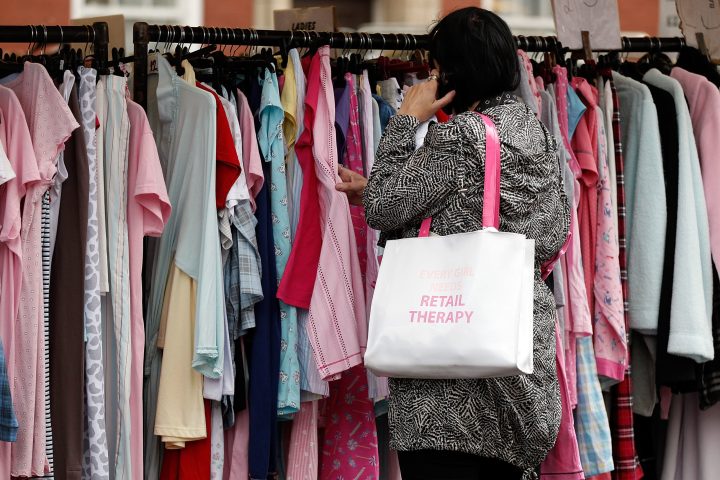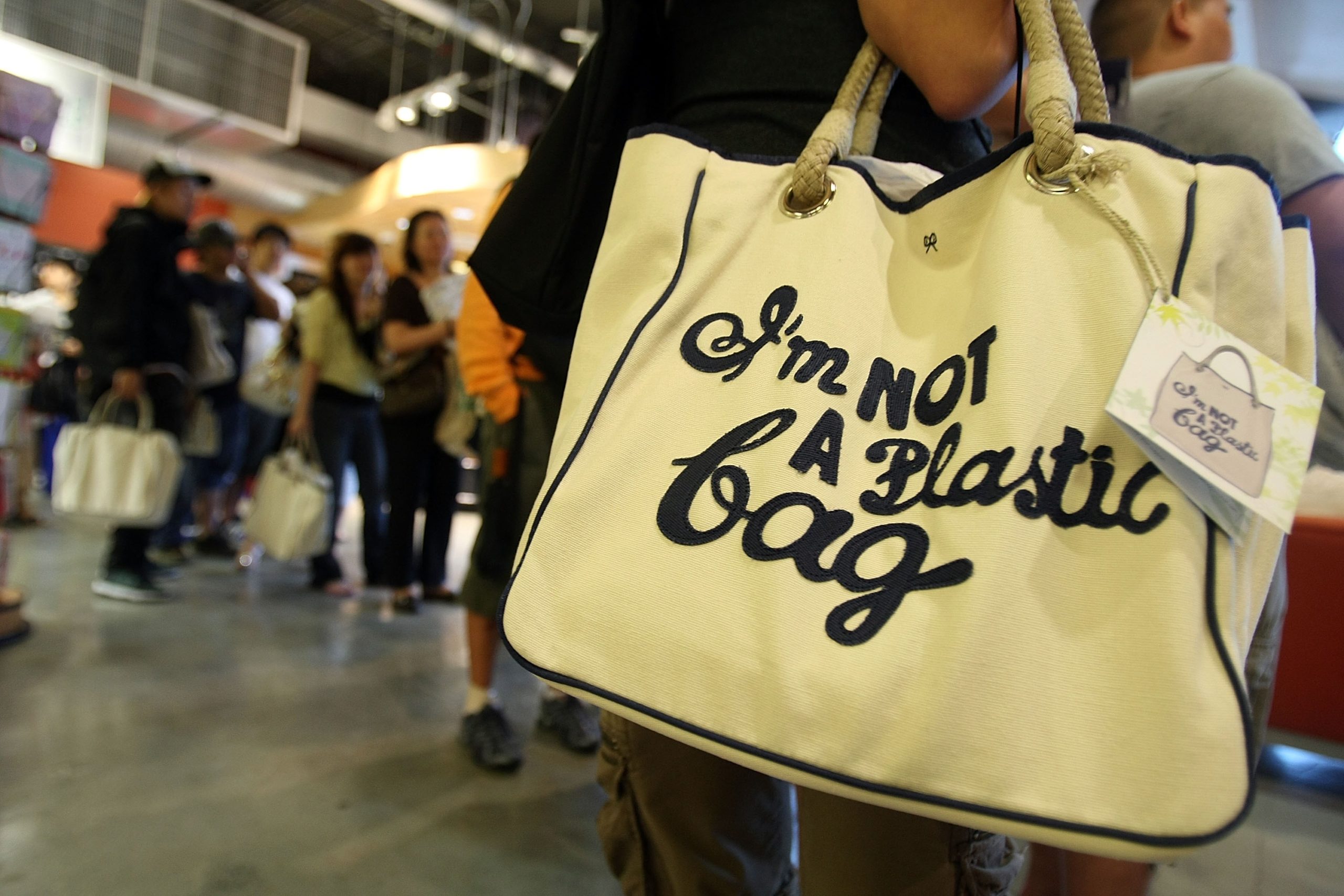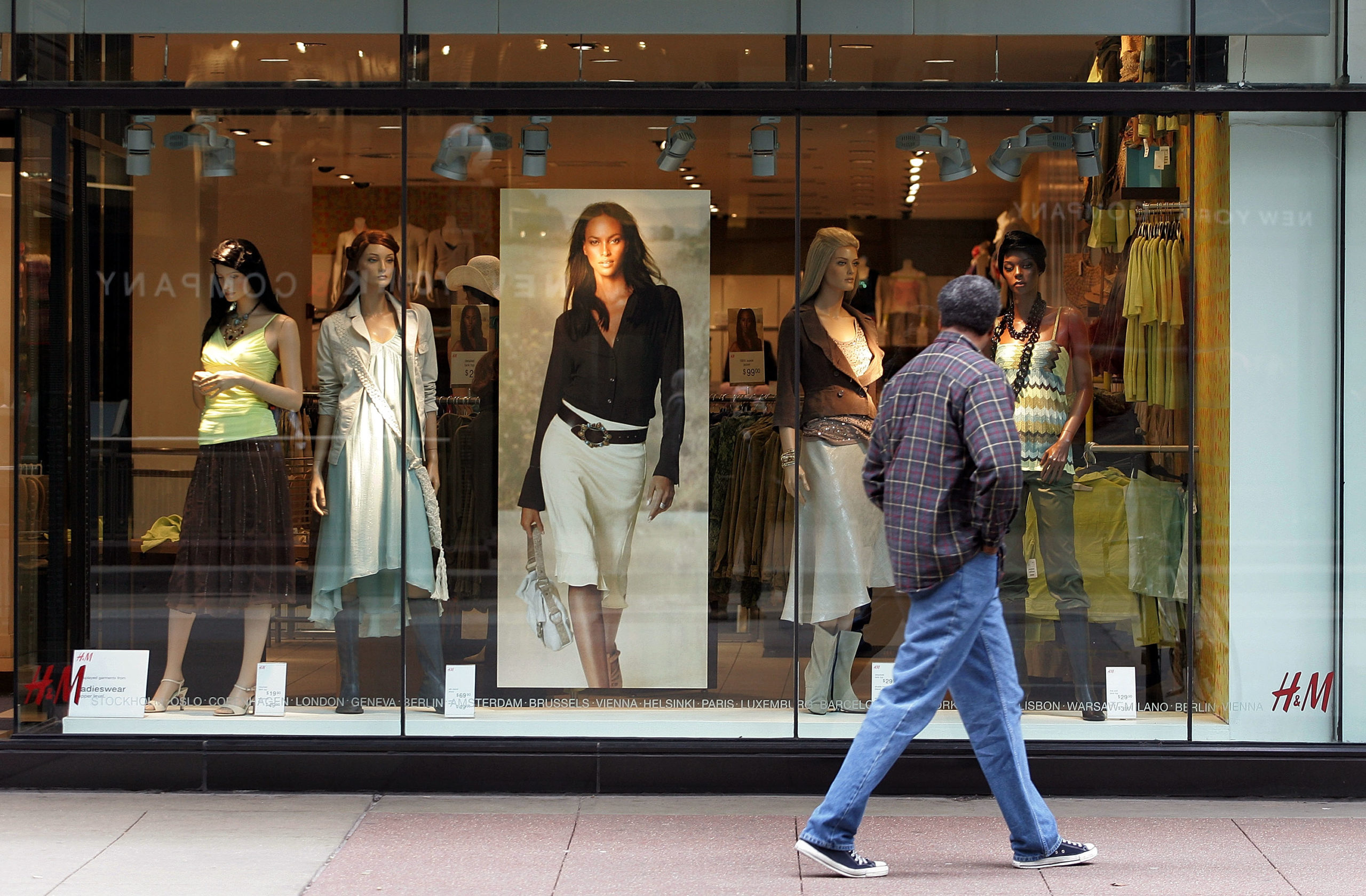PODCAST REVIEW
This week we’re listening: Why what we wear – and what we do with our time – matters

Fashion is a language, communicating everything from dreams and desires to wealth and status. But there is also a dark side to it, full of excess, waste and damage. Here are three podcast episodes about how changing the way we dress can help build a more sustainable world.
Stella McCartney on the Business of Sustainable Design – Business of Fashion
- Format: Single episode
- Year: 2021
- Listen on: YouTube, Apple Podcasts, Spotify, or wherever you find your podcasts.
“While fashion companies are speaking about sustainability more than ever before, actions are lagging public commitments, even among the industry’s largest and most highly resourced businesses,” according to The Business of Fashion Sustainability Index, which “tracks fashion’s progress towards ambitious sustainability targets”.
In this podcast episode, host Imran Amed sits down with fashion designer Stella McCartney to talk about how she guides her company sustainably, while not compromising on making high-end garments, made from luxury (albeit atypical for the industry) fabrics.
The start of this story, though, is far away from design studios and textile reams. For McCartney, it begins on farms.
“Regenerative farming is a way of giving back,” she explains, where the agriculture industry cares for the land instead of stripping it of its nutrients. “It’s also about restoring soil and caring for it, and looking at the entire community around the crop. It’s not just what you take out.”
McCartney believes this is the “future of fashion”, but what does farming have to do with our clothes?
“We’re an industry that farms land,” she says. “Cotton is one of the most used materials, and it uses huge amounts of land, a huge amount of water, a huge amount of chemicals and pesticides. We’re one of the most harmful industries on the planet to the environment.”
There are solutions though, McCartney assures, both as a business owner and a designer.
For example, she has partnered with sustainable companies to source wool and uses yarns that do not harm the animals they come from or the communities that help produce them.
“We use regenerative cashmere, all the waste [that falls to] the floor, we pick up and re-spin it, and work with that. It’s a really interesting way of working because you’ll find all of your fibres are shorter, so I can’t create a really dense cable, sometimes I can’t create the knitwear that maybe I would want to create – but that’s a fascinating design challenge that I find myself on, on a daily basis, in a more sustainable way,” she explains.
The mindset is the same for cotton. McCartney describes how the cotton that her company sources is grown ethically and organically, because the chemicals that are often used in mainstream cotton production not only harm the environment, but can be dangerous for farmers to work with.
“If our mentality shifts in the fashion industry, and we actually want to do this and want to have better practices in our industry, then I think it will get easier.”
But the industry, for the most part, is not there yet.
“Every single day we are faced with a set of challenges,” she says.
While McCartney admits it is often a challenge to be limited with what she can use, she is not willing to sacrifice quality or aesthetics in her designs. Rather than let it hold her back, she says it’s about creatively finding ways to create garments that are both beautiful and kind to people and the planet.
“If you create something that’s sustainable [but] it’s not attractive, designed well [or] desirable, then you’re creating a nothing product,” she says.
While this may seem so far removed from the decisions of the ordinary shopper, McCartney believes consumers are at the centre of the whole sustainable fashion business.
“I don’t think we can rely on our industry to commit to this as much as we can rely on tomorrow’s customers insisting that this is the only thing they’re going to invest in,” she says. When consumers start voting ethically with their wallets and what they clothe their bodies in, this is how industries can be pushed towards sustainable fashion.
***

Customers stand in line after purchasing the “I’m Not a Plastic Bag” shopping totes by Anya Hindmarch at a Whole Foods Market July 18, 2007 in New York City. (Photo by Mario Tama/Getty Images)
Venetia La Manna on Sustainable Fashion – Good Influence
- Format: Single episode
- Year: 2020
- Listen on: Apple Podcasts, Spotify, or wherever you find your podcasts.
London-based presenter and sustainability activist Venetia La Manna describes herself as a “recovering hypocrite”. The broadcaster and fashion lover dedicates her time to education around clothes, design and why what we wear matters. This conversation between La Manna and host, Gemma Styles, is both a chatty and thoughtful approach to fast fashion, as the two explore how to love what you wear but also love the world and people who make your clothes.
La Manna champions thrifting, upcycling and re-wearing outfits, but, like many of us, admits she has not always been so intentional about her clothing.
“I actually started my career in TV… and then I stepped in front of the camera, and at the time I was a huge lover of fast fashion, and I never wanted to be seen in the same outfit twice. In fact, I thought as a TV presenter, I couldn’t be seen in the same outfit twice,” La Manna recalls.
And then, as anyone with anything of a presence on the internet has experienced, someone called her out.
“I was talking about my life as a vegan, and the kind of things that I was eating and cooking. Someone on the internet was like, “hey, great that you’re eating plants, but you’re wearing a lot of fast fashion”. So off I popped, went off and did some research,” she says.
And what she found made her cringe.
“Fast fashion is a super-quick turnaround form of fashion. So it goes from being designed to being made in usually just a matter of weeks,” La Manna explains.
Why is this a problem?
“Fashion is a really polluting industry. It’s one of the top most-polluting industries in the world; it requires so much energy, transportation, water, the lot,” she says. And while people are waking up to this issue, that in turn has made some brands start to “greenwash” the realities of their product.
“People are getting more familiar with sustainable and green marketing from various fashion brands. It feels like they’re all doing it,” she notes.
Greenwashing, La Manna explains, is when a brand claims to be making environmentally friendly decisions to appeal to buyers, but does not address the ethical issues surrounding the fashion industry.
In reality, she explains, the fast fashion industry, which includes retailers such as H&M and Zara, is “a really, really damaging and oppressive industry… Generally speaking, fast fashion is now incredibly cheap. And the people at the top of these companies that we’re so familiar with are making millions, in fact billions, [they] are some of the richest people in the world and the people making the clothes are earning, on average, about $21 a month… So there’s a real discrepancy.”
And so, she went on “a clothing detox”, educating herself about the issues around fashion, and soon launched #OOOTD, “which was meant as a little middle finger to the #OOTD hashtag (which is ‘outfit of the day’), so OOOTD was ‘old outfit of the day’, to encourage outfit repeating.”
La Manna’s approach is introspective but also realistic: being able to browse, buy and wear clothes with three clicks and without looking up from your screen is a relatively new situation, and brands are using the digital and social media age to their advantage.
“Fast fashion has completely disrupted our consumption when it comes to clothing; we didn’t used to shop in this way, we didn’t used to buy this much… that’s not how we used to live… I want the onus to be on fast fashion brands, they push this newness on us all the time. It’s relentless… So we feel like in order to feel good, and to look good, and to keep up, we have to buy so much,” she says.
While La Manna acknowledges that a lot of the change that needs to happen is in the legislation, government and corporate practice, it is not completely out of our hands. What every person buys matters, and intentional shopping is important.
“You can buy less, buy better. Stick to the things that align with you ethically. Make the changes in the aspects of your life that you feel you can make changes – and that looks different for everyone – but you can also think about the wider picture, the wider issue. Think about calling out brands, holding them accountable, signing petitions, lobbying governments, all of that stuff as well.”
La Manna also has a podcast of her own, a six-part show entitled Remember who made them.
***

A man looks toward window mannequins as he walks past an H&M clothing store April 7, 2005 in downtown Chicago, Illinois. (Photo by Tim Boyle/Getty Images)
Timo Rissanen – Design Can Save Us – Wardrobe Crisis
- Format: Single episode
- Year: 2017
- Listen on: Apple Podcasts, Spotify, or wherever you find your podcasts.
“Of approximately 80 billion garments produced every year, about 1/3 are sold full price, 1/3 on sale, and 1/3 are never sold. Much of this surplus is destroyed,” says host Clare Press as she opens this podcast episode.
This huge industry, full of glitz and glamour, is contrastingly what Timo Rissanen calls “grotesque, wasteful and deadly”.
Rissanen is a former assistant professor of fashion design and sustainability at the Parsons School of Design, and describes himself as an educator, artist and designer. Most importantly, however, he is a pioneer of sustainable fashion.
Yet, instead of going full steam ahead into this topic, Press slows down right at the beginning, and asks Rissanen to share about his most recent project.
And it’s nothing you could have guessed.
Rissanen is cross-stitching a letter to humanity, creating art by needlepoint, to be read 100 years from now.
This project is interwoven with time. Cross-stitch is notoriously time consuming, and this is Rissanen’s way of stepping back, slowing down in a fast-paced world and industry and intentionally sitting with a task that refuses to be short lived.
“Cross-stitching – a very deliberate slowing down – allows for an exploration of text as a tactile and visual medium: text as texture, text as surface,” Rissanen explains on his website.
And it is also a project that looks ahead, acknowledging that the letter and the art will survive Rissanen, read out long after he is gone. And here, in this homage to time spent and time to come, is the crux: what we do with our time matters.
“In sustainability, we need to talk and think about time scales that often exceed our own lifespans,” he says.
“Somewhere in that letter will also be an apology, a sorry for the things that we have done.”
Rissanen did not always want to be a designer, he says. He grew up in Finland among nature, and initially wanted to go into conservation. Today, his life has taken a different turn, but that passion for the environment lives on in fashion.
His research is all about zero-waste design and garment creation in a quest to prove that what we wear does not need to affect our Earth so negatively.
“Conventional design approaches waste approximately 15% of the fabric used in the design and make of a cut-and-sew garment,” Rissanen states in his thesis.
It’s not just the off-cuts that are wasted either, Rissanen says – it can be entire reams of fabrics that are not used and then incinerated by design houses who do not want their fabrics to get into the hands of competitors.
The problem extends, too, to clothes that have already been made. “When a brand orders 50,000 T-shirts, the factory will produce 70,000 in case there’s a reorder. And if there isn’t? They burn them,” the show notes state, or they are sent to landfill.
“According to the Environmental Protection Agency (EPA), in 2012, 84% of unwanted clothes in the US ended up in landfill or an incinerator. Up to 95% of the textiles sent to landfill could be recycled.”
“Fashion is known for its excess, and its craziness and its nuttiness,” Press says, so how can we continue to dream in the inspiration, creativity and beauty of fashion while rejecting the “more is more” culture that it revels in?
“There’s no one blanket solution,” Rissanen believes. Instead, companies need to come up with sustainable solutions that work for their business models. And on cutting tables, there are creative ways designers can cut through fabric to reduce waste.
Rissanen’s research developed such techniques for design patterns so that fabric is not wasted in the garment-making process, and advocates for designers to incorporate zero-waste thinking into the pattern designing from the beginning, not as an afterthought.
“We can’t be complacent anymore,” Rissanen says.
Host Clare Press was the first VOGUE Sustainability Editor, and is passionate about ethical and sustainable fashion. The Wardrobe Crisis podcast is dedicated to exploring the industry through a critical lens, and there are many episodes to explore – this one is just the beginning. DM/ML
















 Become an Insider
Become an Insider
Comments - Please login in order to comment.